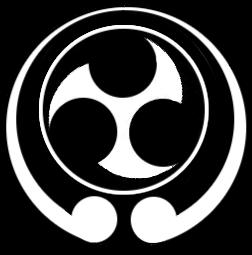
![]()
![]()
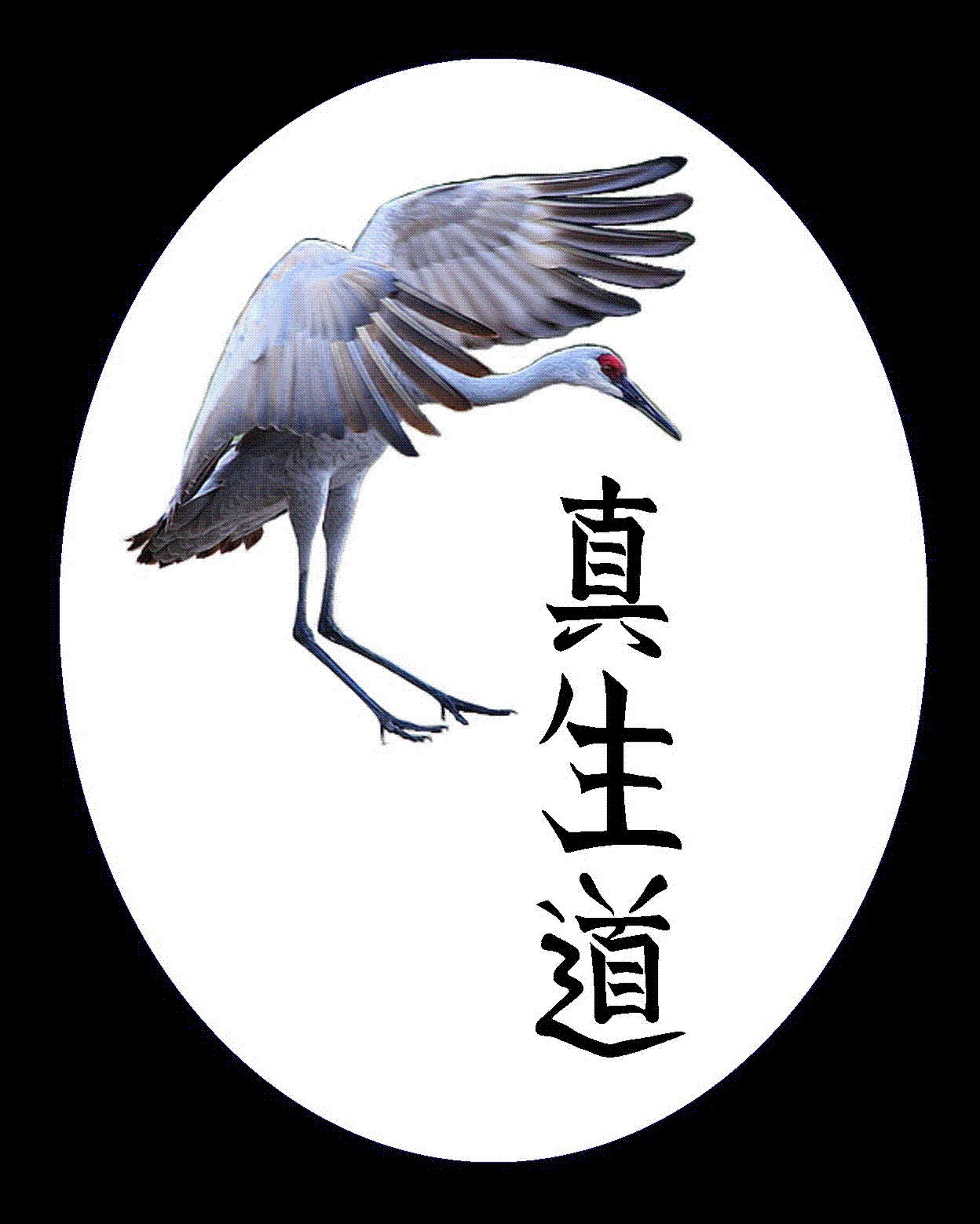
Headingley Karate
|
|
|
Shinseido Syllabus
Introduction
Shinseido uses a structured but flexible syllabus to guide students through the long process of learning a martial art. However, the syllabus is there merely to act as a guide. In reality Shinseido is an open ended martial system, there really is no end to the learning process. The beginners syllabus can be seen below. The Techniques page shows examples of the kind of techniques students learn as they progress further through the syllabus.
Shinseido teachers recognise that individual students have different needs, different attributes, and different levels of fitness and health.
All these factors are taken into account so that different students may be taught in slightly different ways to each other.
It is a primary goal of Shinseido instructors to help people fulfil their potential as individuals, rather than to produce practitioners who are identical clones of one another.
Grading Structure
The grades of Shinseido are split into two broad categories, common to many oriental martial arts:- The student grades, known as kyu grades. These start at 9th kyu and work down to 1st kyu.
A coloured belt is used to indicate each student's grade, as follows:
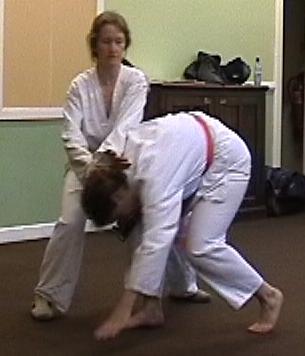 9th kyu students practising together
9th kyu students practising together- 9th - 7th kyu = Orange
- 6th - 4th kyu = Green
- 3rd - 1st kyu = Brown
- The practitioner, or dan, grades. These start at 1st dan and work upwards. Generally dan grades wear a plain black belt. A practitioner would generally be considered a teacher in their own right after achieving the level of 3rd dan (after around 15 years of training).
The grades have no real significance in themselves. They are simply milestones along the way and help to give structure to the learning process.
Training in Shinseido is a personal journey.
To some degree a student’s grade is a measure of their skill in the martial art, in absolute terms.
But equally it reflects how far the student has come on their personal training journey.
Examinations
In the Leeds Shinseido dojo we do not have set dates for conducting examinations. Instead the teacher and student agree when they both think the student is ready to grade. Examinations are then conducted within the course of a normal lesson. Kyu grade students can expect to grade roughly twice a year.
Beginners Syllabus
It usually takes around 50 hours (25 lessons) of training to reach the first grade (coloured belt) in Shinseido. Although the syllabus is never fixed and may vary for different students, at this first level it has 2 aims:- to act as a short self-contained self-defence course
- to begin laying the foundations for later study
So the number of techniques is kept to a minimum and the techniques themselves are chosen because they are as simple as possible to perform.
For this reason you won’t see some of the techniques you might normally associate with Karate.
Punching, for example, is a skill that actually takes years to get right.
You have to learn to form the first correctly, get the wrist alignment correct and select an appropriate target to strike from the correct distance.
Without a substantial amount of training you’re far more likely to hurt yourself than anyone else with this technique.
Similarly you won’t see the range of kicks you might normally expect to see in Karate.
In fact you won’t see any high kicks at all in any part of Shinseido training, as these are strictly for the sports arena and have nothing to do with self-defence.
Below is a list of the basic techniques usually taught to beginners in Shinseido:
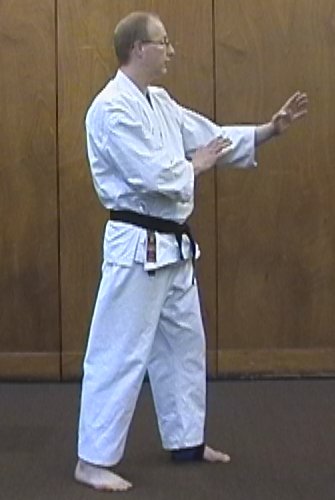
The basic forward stance
|
Stances
- Forward stance
The standard posture, or stance, is designed to give maximum opportunity to protect yourself, stability so that your strikes have power and the ability to move quickly in any direction. The knees must be kept slightly bent and the arms held in front of the torso.
Blocks
- Rising bridge
The arm sweeps up in front of the face to deflect or check attacks to the head or upper torso. - Downward sweep
Similar in principle to the rising bridge, this movement checks or deflects attacks to the lower torso. - Inward block
Used to sweep straight punches away from the head.
Strikes
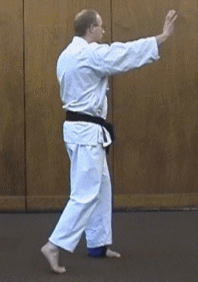
Palm-heel, knee and elbow
|
- Palm-heel
Simply extend the arm to strike the head with the heel (ie. base) of the palm. When striking with the rear hand the rear heel raises so that the hip is allowed to project forwards to add bodyweight to the strike. - Elbow
A devastatingly effective strike, even with just a moderate amount of practice. As with the palm-heel, on the rear side the movement of the hip allows you to add much more bodyweight to the strike. - Knee strike
The most important kick any martial artist will ever learn. Easy to do and highly effective when used to strike the attacker’s thigh.
Breakfalls
- Back breakfall
When defending yourself there is always a serious risk of falling or being knocked over. So it is important to learn how to fall without injury. Often people can break their wrist or collarbone by putting a hand out to break their fall. Or their head or spine impacts on the floor, potentially causing very serious damage. The back breakfall avoids both of these problems. Initially students begin practising it sitting on the floor. With practice they can then change to starting from a crouching position. Finally it can be practiced from a standing position. Students advance on the next stage of practice only when they feel ready to do so. If a student has an existing back problem this will be taken into account, to ensure that Karate training does not aggravate the health.
Vital points
The human body is riddled with ‘vital points’ – areas that can be attacked with little force but can produce dramatic effects. This is an area of study that takes years to master. However, even a complete beginner can quickly learn to apply a small number of vital point techniques to good effect.Training drills
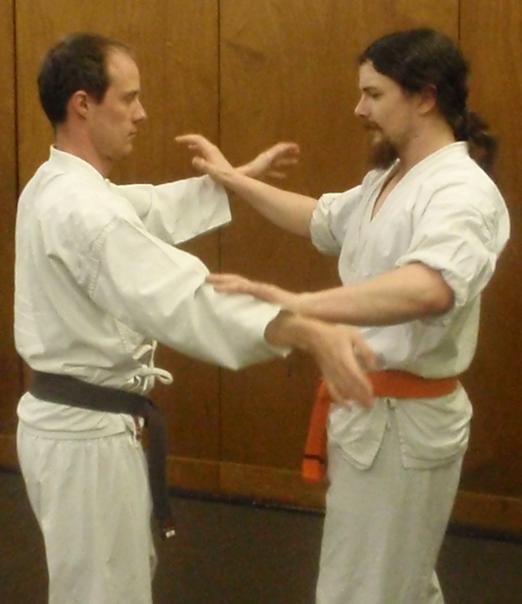
Sticking Hands drills develop sensitivity to the assailant's movements
|
- Sticking hands - to develop sensitivity to touch (learning to use your arms as antennae).
- Pushing hands - building on the above exercise, to develop the ability to redirect your partner's limbs.
- Waveform - learning to receive and blend with an attack, using appropriate footwork.
Defences
You will be taught defences to a variety of different kinds of attacks, in which the above techniques and principles can be combined together in different ways to enable you to escape. These attacks include various forms of:- Arm grabs
- Lapel grabs
- Chokes
- Hair grabs
- Bearhugs
- Punches
To learn more just come along for a FREE trial lesson.